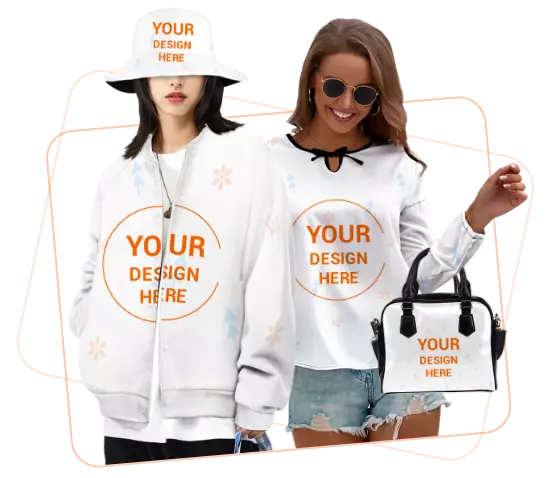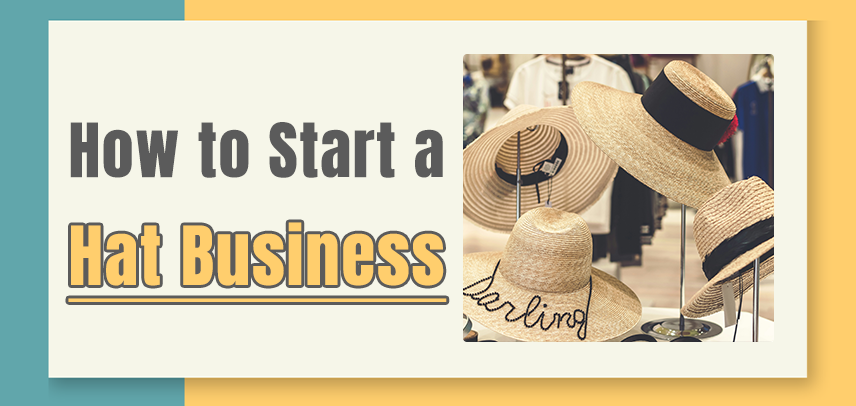
How to Start a Hat Business (2025)
Hats are among the finest fashion accessories for people with a strong interest in fashion. With a prediction that the clothing accessories and other clothes market will generate US$9.53 billion in revenue in the US in 2025, starting a hat business in 2025 is thrilling and lucrative.
Hats have long been a classic fashion item that combines elegance and utility. Moreover, they are still one of the most trending products to sell online. In short, hats are essential to any person's clothing, whether personalized baseball caps, fashionable beanies, or traditional fedoras. Because of its diversity and constant evolution, the hat business offers a wealth of creative and entrepreneurial potential.
This guide will take you through every stage of how to start a hat business.
Page overview:
How Much Does It Cost to Start a Hat Business?
Starting a Hat Business in 9 Steps
Step 1: Conduct Market Research
Step 2: Decide Niche and Customer Base
Step 3: Build Up Your Hat Online Store
Step 4: Choose Reliable Suppliers
Step 5: Select Hat Sizes and Types
Step 7: Choose A Printing Method
Step 9: Launch and Promote Your Hat Business
Why Start a Hat Business?
Hat business model offers numerous advantages for aspiring entrepreneurs. Firstly, a growing market demand for stylish and functional hats is driven by fashion trends and the increasing popularity of personalized accessories. Hats are a versatile fashion item, appealing to many customers of different ages and lifestyles.
One of the key benefits of starting a hat business is the low startup costs. Unlike other fashion items, hats can be produced with relatively low overhead expenses, making them accessible for new business owners.
Additionally, the hat industry has significant profit potential. Entrepreneurs can achieve substantial profit margins with the right design and marketing strategies.
Another compelling reason to start a hat business is the opportunity for brand building. Hats are a visible accessory, allowing your hat brand to gain recognition and create a strong identity in the market.
Moreover, the ability to offer personalized options adds value and attracts customers looking for unique, custom-made products. This personalized aspect can set your hat business apart from competitors and foster customer loyalty.

Is a Hat Business Profitable?
Yes, hat business model can be highly profitable. According to recent industry reports, the global hat market is projected to grow significantly in the coming years, driven by consumer demand for fashionable and functional headwear.
Entrepreneurs who effectively leverage trends, quality materials, and strategic marketing can achieve impressive profit margins. With relatively low production costs and the ability to charge premium prices for unique designs, the profitability of a hat business is promising.
How Much Does It Cost to Start a Hat Business?
Starting a hat business varies in cost, typically from $500 to $10,000. Critical expenses include market research, brand identity, and hat design. It is necessary to understand your target audience and create a memorable brand image.
Manufacturing costs depend on production volume and materials used, while marketing and advertising are crucial for launching your brand and attracting customers. These costs include online campaigns, social media promotions, and influencer collaborations.
Careful budgeting and strategic planning are essential to managing these startup expenses effectively.
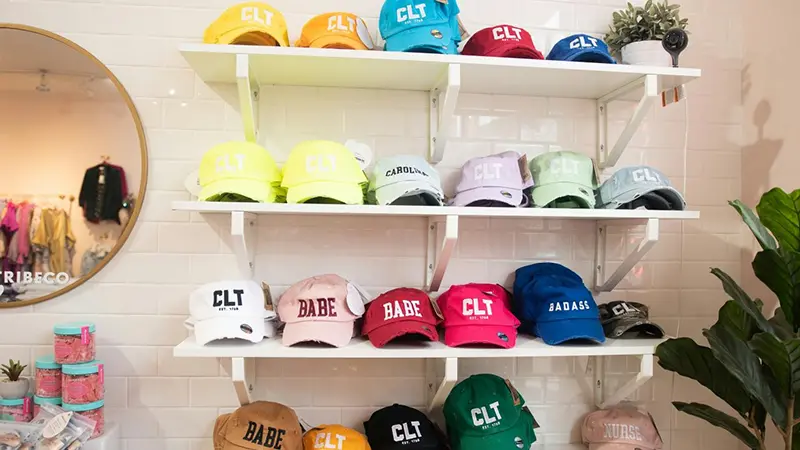
Starting a Hat Business in 9 Steps
Step 1: Conduct Market Research
Researching hat market is a crucial step before you start a hat business model. If you want to cater to market demand, the following points benefit you a lot:
- Analyze Competitors: Study the types of hats they offer, pricing strategies, and target markets. Identify gaps and opportunities within the market by observing their strengths and weaknesses.
- Customization: The trend focuses on the growing demand for personalized hats, as customization is becoming increasingly popular among consumers. Understand how competitors leverage customization to attract customers and differentiate their products.
- Gather Feedback: Conduct surveys or focus groups to collect insights from potential customers about their preferences and needs. Use this feedback to refine your product offerings and marketing strategies, ensuring they align with customer expectations.
Step 2: Decide Niche and Customer Base
To make it successful, you need to define your niche and target customer base. For example, you could specialize in:
- Sports Fans: Target fans of specific teams or sports who seek hats to show their support. This group is highly engaged and often seeks ways to display their allegiance.
- Outdoor Enthusiasts: Cater to individuals needing functional and stylish hats for hiking, fishing, or camping activities. These consumers prioritize durability and functionality.
- Fashion-Conscious Consumers: Appeals to those always looking for trendy headwear that complements their outfits. This group values style and closely follows the latest fashion trends.
- Pet Lovers: Offer matching hats for pet owners and their pets, tapping into the growing pet accessories market. This niche appreciates unique and fun products that allow them to showcase their love for their pets.
- Music Fans: Create hats for fans of specific music genres or bands, providing merchandise that resonates with their interests. Music fans often seek memorabilia that connects them to their favorite artists and bands.
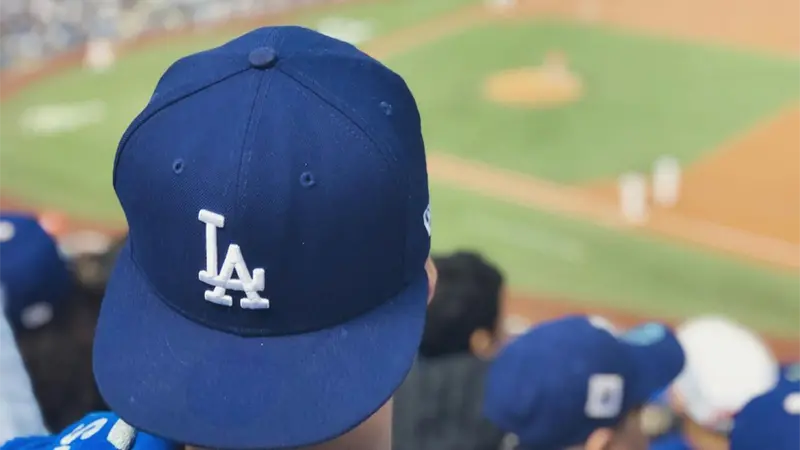
Step 3: Build Up Your Hat Online Store
Building a successful online store for your hat business involves several key steps:
Choose an Ecommerce Platform
Select a platform that suits your needs, such as Etsy, Shopify, or WooCommerce. These platforms offer user-friendly interfaces and a variety of tools to help you manage your store effectively.
Design an Attractive Website
Ensure your website is visually appealing and easy to navigate. Use clear, high-quality images to showcase your hats from different angles. Provide detailed descriptions that highlight the unique features and benefits of each product.
An attractive and well-organized website enhances the shopping experience and can significantly boost sales.
Use SEO Tools
Implement SEO strategies to rank higher in search engine results and drive organic traffic to your store. Utilize relevant keywords, optimize product titles and descriptions, and regularly update your content.
Additionally, consider creating blog posts or videos related to hat fashion trends to attract more visitors and establish your brand as an authority in the industry.
Step 4: Choose Reliable Suppliers
Choosing reliable print-on-demand suppliers is crucial for the success of your hat business. Consider the following factors:
Quality Assurance
Ensure suppliers have robust quality assurance processes. High-quality materials and craftsmanship are essential for delivering superior products. Request detailed information about their quality control measures and review feedback from other clients to ensure consistency and reliability.
Product Diversity
Look for suppliers offering a variety of hat styles, fabrics, and customization options. A diverse product range allows you to cater to different customer preferences and expand your inventory. For instance, Inkedjoy offers a wide range of products that can help you meet various market demands.
Printing Method
For customized hats, the printing method used by the supplier is critical. Ensure the supplier uses advanced and reliable printing techniques, such as embroidery, screen printing, or heat transfer, to produce vibrant and durable designs.
Fast Shipping
Timely delivery is crucial for maintaining customer satisfaction. Choose suppliers with efficient logistics and fast shipping options to ensure your products reach customers promptly. Evaluate the supplier's shipping policies and track record to confirm they meet your expectations.
Sample Test
Conduct sample tests to verify the quality and consistency of the supplier's products. Ordering samples allows you to inspect the materials, craftsmanship, and printing quality firsthand. This step ensures that the supplier can consistently deliver products that meet your high standards.
By carefully evaluating these factors and considering print-on-demand suppliers like Inkedjoy, you can establish strong partnerships that support the growth and success of your hat POD business. Inkedjoy will fulfill your orders with satisfied customer service.

Step 5: Select Hat Sizes and Types
What Hat Sizes Sell the Most?
Different regions have different head shapes and sizes. The typical female hat size is 7-1/4, whereas the most frequent male size is 7-3/8.
What Type of Hats Are the Most Popular?
- Baseball Hats: A staple in casual wear, it is famous for sports and everyday use.
- Beanie Hats: It is ideal for cold weather, often made of knit material, and is highly popular among all age groups.
- Bucket Hats: Known for their broad, downward-sloping brim, these hats are functional and trendy.
- Newsboy Caps: These caps are classic and stylish, are often associated with vintage fashion, and provide a sophisticated look.
- Fedoras: Timeless and versatile, fedoras are suitable for both casual and formal occasions.
- Beanies: Known for their warmth and comfort, beanies are an essential winter staple in various styles and materials.
Step 6: Design Your Hats
Creating custom designs requires careful consideration of several key factors to ensure they are visually appealing and of high quality. Here are the essential elements to focus on:
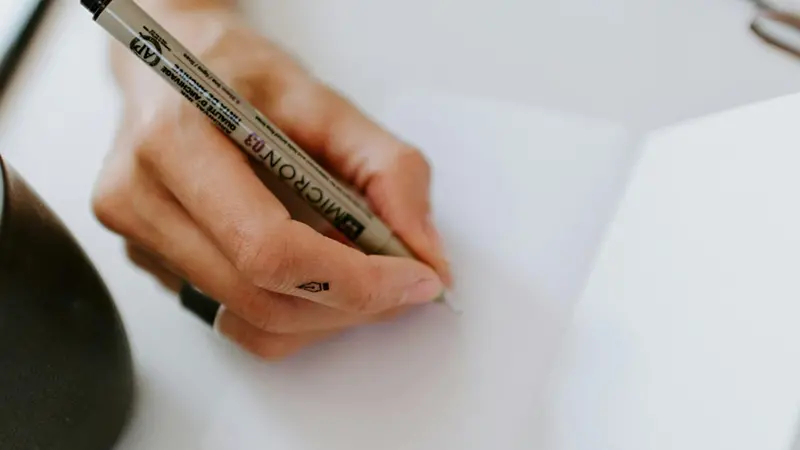
Design Position
Analyze the space where you want to place your design on the hat. Different types of hats offer various areas suitable for designs. For instance, the front panel of a baseball cap is ideal for logos or text, while the side panels can accommodate smaller graphics.
Bucket hats may offer a larger surface area for more extensive designs. Proper placement ensures that the design is visible and enhances the overall look of the hat.
Image Size
Choose an image size that is appropriate for the hat type. The design should not be too big or too small. Large, intricate designs may lose clarity when scaled down, whereas minimal designs might not be noticeable.
Each hat type has its ideal image size and placement; for example, a detailed logo might fit nicely on the front panel of a snapback but could appear cluttered on a smaller hat. Balancing size and complexity is critical to maintaining the design's impact.
Image Resolution
The resolution of your image directly influences the printing quality. High-resolution images (at least 300 DPI) are essential for achieving crisp and clear prints. Low-resolution images can result in pixelation and blurriness, detracting from the design's appeal.
Ensuring your designs are created or scanned at a high resolution is crucial, especially for detailed and intricate artwork.
Use Inkedjoy's Mockup Generator
Utilize Inkedjoy's mockup generator to design your hats. This tool allows you to visualize how your designs will look on different hat styles, helping you adjust the design position, size, and resolution accordingly.
The mockup generator provides a realistic preview, enabling you to make necessary tweaks before finalizing the design. It ensures that your hats meet your expectations and appeal to your target audience.
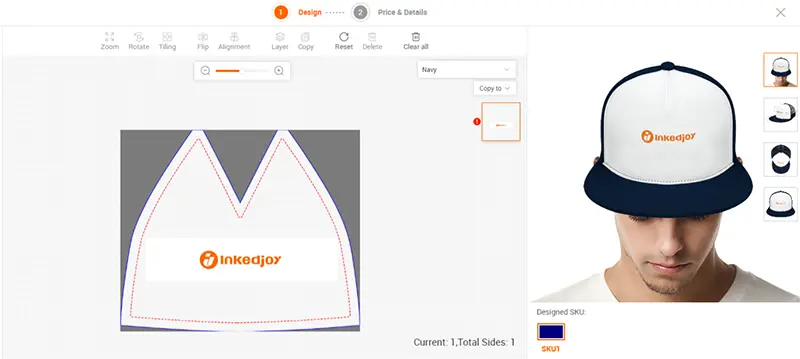
Design considerations
- The Simple is the Best: Simple designs are often more effective and visually appealing. They are easier to recognize and remember, making a more substantial customer impact.
- Consider Line Thickness: Ensure that the lines in your design are not too thin. They may not print well and could lose visibility. Opt for thicker lines to maintain clarity and definition.
- Limit Color Usage: Using too many colors can complicate the design and increase production costs. Limiting your color palette to key colors can create a cohesive and striking design.
- Opt for Contrasting Colors: Choose colors that contrast nicely to make your design stand out. High contrast improves visibility and makes the design more eye-catching.
Step 7: Choose A Printing Method
Choosing the right hat printing method is crucial for achieving the desired look and durability. Here are some popular printing methods:
Embroidery
Embroidery is cost-effective and versatile, ideal for small logos with intricate details. Various types include:
- Flat Embroidery: Creates smooth, flat designs suitable for text and simple graphics.
- 3D Embroidery: Adds a raised effect, providing a textured look.
- Applique Embroidery: Involves stitching fabric pieces onto the hat for a layered effect.
- Lock Stitching: Ensures durability with tight, secure stitches.
- Patch Label: Uses embroidered patches that can be attached to hats for a classic look.
Screen Printing
Screen printing is excellent for more complex, colorful designs. It involves pushing ink through a screen stencil, which is ideal for bold graphics and large areas of solid color. This method is durable and cost-effective for bulk orders.
Sublimation
Sublimation involves absorbing ink into the fabric, producing vibrant, full-color designs that are durable and resistant to fading. This method is perfect for intricate designs and patterns that require a wide color range.
Puff Printing
Puff printing adds a raised or textured effect to a design. It uses a special ink that expands when heated, creating a three-dimensional look. This method is excellent for adding visual interest and texture to your hat designs.
Step 8: Set Hat Pricing
Setting the right price for your hats involves several key steps:
- Calculate Total Cost: Include all expenses such as production, materials, labor, and shipping. It ensures you cover your costs and maintain profitability.
- Research Competitor Prices: Analyze what similar hats are being sold for in the market. It helps you understand the price range and position your products competitively.
- Consider Discounts: Plan for occasional discounts or promotions. Offering discounts can attract more customers and boost sales, but ensure they are sustainable and do not erode your profit margins.
- Decide a Reasonable Profit Margin: Determine a profit margin that balances profitability with competitive pricing. A reasonable profit margin typically ranges from 20% to 50%, depending on your market and business goals.

Step 9: Launch and Promote Your Hat Business
Launching and promoting your hat business effectively requires a strategic approach and business plan. Here are vital steps to ensure a successful launch:
Develop Your Brand
Define your hat brand's core values, mission, and vision. Your hat brand should resonate with your target audience and reflect the unique aspects of your products.
Create a compelling brand story highlighting what sets your hats apart, whether the quality, design, or customization options.
Leverage Social Media
Use social media platforms like Pinterest, Instagram, Facebook, and TikTok to showcase your hats. Post high-quality images and videos highlighting your designs, and engage with your audience through comments and messages.
Utilize hashtags and collaborate with popular social media accounts to increase visibility. Regularly update your profiles with fresh content to keep your audience engaged.
Collaborate with Influencers
Partner with influencers who align with your brand's values and aesthetics. Influencers can help reach a broader audience and lend credibility to your brand.
Choose influencers whose followers match your target market, and consider offering them free products or a commission for sales generated through their promotion.
Utilize Email Marketing
Build an email list by offering incentives such as discounts or exclusive access to new collections. Send regular updates about new designs, promotions, and exclusive offers to keep your subscribers informed and engaged. Personalize your emails to make your customers feel valued and foster loyalty.
Start a Hat Business with Inkedjoy
Starting a hat business with Inkedjoy can streamline your process and ensure high-quality products. Inkedjoy offers comprehensive services, including diverse hat styles, thoughtful customer service, advanced printing methods like embroidery and sublimation, and a user-friendly mockup generator to visualize your print-on-demand ideas. Moreover, it is free to use.
Their reliable quality assurance and efficient shipping options make them an excellent partner for your business. With Inkedjoy, you can focus on creating unique, appealing hats while they handle production and logistics, helping you launch and grow your brand successfully.
Conclusion
Now that you know every stage of how to start a hat company, starting a hat business in 2025 becomes easy. You can attract a diverse customer base by conducting thorough market research, choosing a specific niche, and designing high-quality hats. Leveraging reliable suppliers like Inkedjoy ensures your products meet high standards.
Effective social media, influencer collaborations, and email marketing can help you build a strong brand presence and drive sales. With careful business plan and strategic execution, your hat business can thrive in the competitive fashion industry, turning your passion into a profitable venture.
FAQS
1. What Makes Hats Expensive?
Hats can be expensive due to high-quality materials, intricate design work, brand reputation, and advanced manufacturing techniques. Features such as custom embroidery, limited edition designs, and premium fabrics can also drive up the cost.
2. Which Countries Buy the Most Hats?
Countries with high hat consumption include the United States, China, and Japan. These markets show significant demand due to cultural trends, fashion preferences, and the popularity of various hat styles in different regions.
3. What Is the Profit Margin on Hats?
The profit margin on hats typically ranges from 20% to 50%, depending on factors like production costs, pricing strategy, and market demand. Higher-end or customized hats can command larger margins, while mass-produced hats might have lower margins but higher volume sales.



